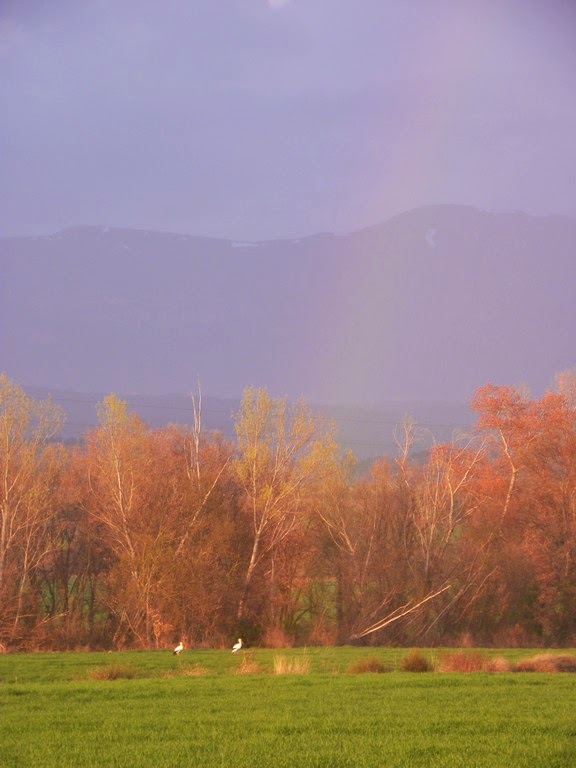This is the little hamlet of Riglos, a bit touristy owing to these spectacular sandstone cliffs, the scale of which is hard to imagine until you get up close. They are home to lots of Vultures as well as a dead cert wintering location for Wallcreepers which can be found, with patience, in the shady crevices I was told.
so here we are a bit closer having parked the car just outside the hamlet
As I climbed nearer this Black Kite came drifting over me
and then I saw the first wallcreeper, aka rock climber!
(and, no, he hasn't got a bare bum, its his "ordinary" shoes slung round his waist if you look closely!). I don't fancy this as a pastime at all, thanks. There were 4 lots there today
From here, just turn round and admire the view while waiting for the Wallcreepers to appear
This plant caught my eye tho' I've no idea what it is - have you?
I spent 4 hours here gazing into shady crevices like this without any Wallcreepers showing themselves - there was a brief glimpse of a Blue Rock Thrush, photograph impossible. This view also shows Griffon Vulture nest ledges ( look for the white poo)
Oh look! There's one now
This place was very quaint and narrow, a bit like Loporzano but more hilly
and this yellow plant was very striking but, to me, unscented
this next picture, which I've twiddled a bit, gives some sense of scale, and the bravery of the rock climbers; they frightened me
So, I failed to see the Wallcreepers here, oh well!
Next day I went South into the steppes and regretted not taking my telescope. Apart from the larks present, all other stuff was a long way away, or very wary. A good camera, together with the skill to make the most of it, like Steve Ray or Phil Smith, are also essential; so, with apologies, no pics of the goodies found . This first view is typical of the scenery, quite unlike any other part of Spain I've been to
Here is the place I was directed to, where I found Stone Curlew, Calandra, Thekla, Short Toed, Lesser Short Toed, Crested and possibly Dupont's Lark, Black Bellied and Pin Tailed Sandgrouse, Tawny Pipit, Short Toed Eagle, and Linnet!
Later, at a small lake and reedbed, I found the warden, one Alberto - smashing bloke, who was very excited by the prescence, among the Red Crested Pochard and Black Necked Grebe, of a pair of Tufted Duck!
Later, back at Loporzano, another walk into the low hills at the back of the village as a thunderstorm brewed up in the hills
the scent of this almond blossom was just superb
and as the sky darkened, the blossom itself seemed to glow, it was all very dramatic, and I couldn't resist getting all arty!
Back at the church the White Storks were at home on the somewhat crumbling tower
and as it started to rain I headed back, stopping for this pic of the Castell Montearagon
When I got back to Boletas, somewhat damp, the Storks were down feeding, and this is my attempt to photograph them at the end of the rainbow!
My prize for getting wet was this butterfly photographed while the sun was still shining, a superb Spanish Festoon. It was worth the trip almost just to see this
Final part 4 to come


























Enjoying the reported Peter!
ReplyDeleteI reckon the mystery plant is an asphodel, perhaps aestivus?